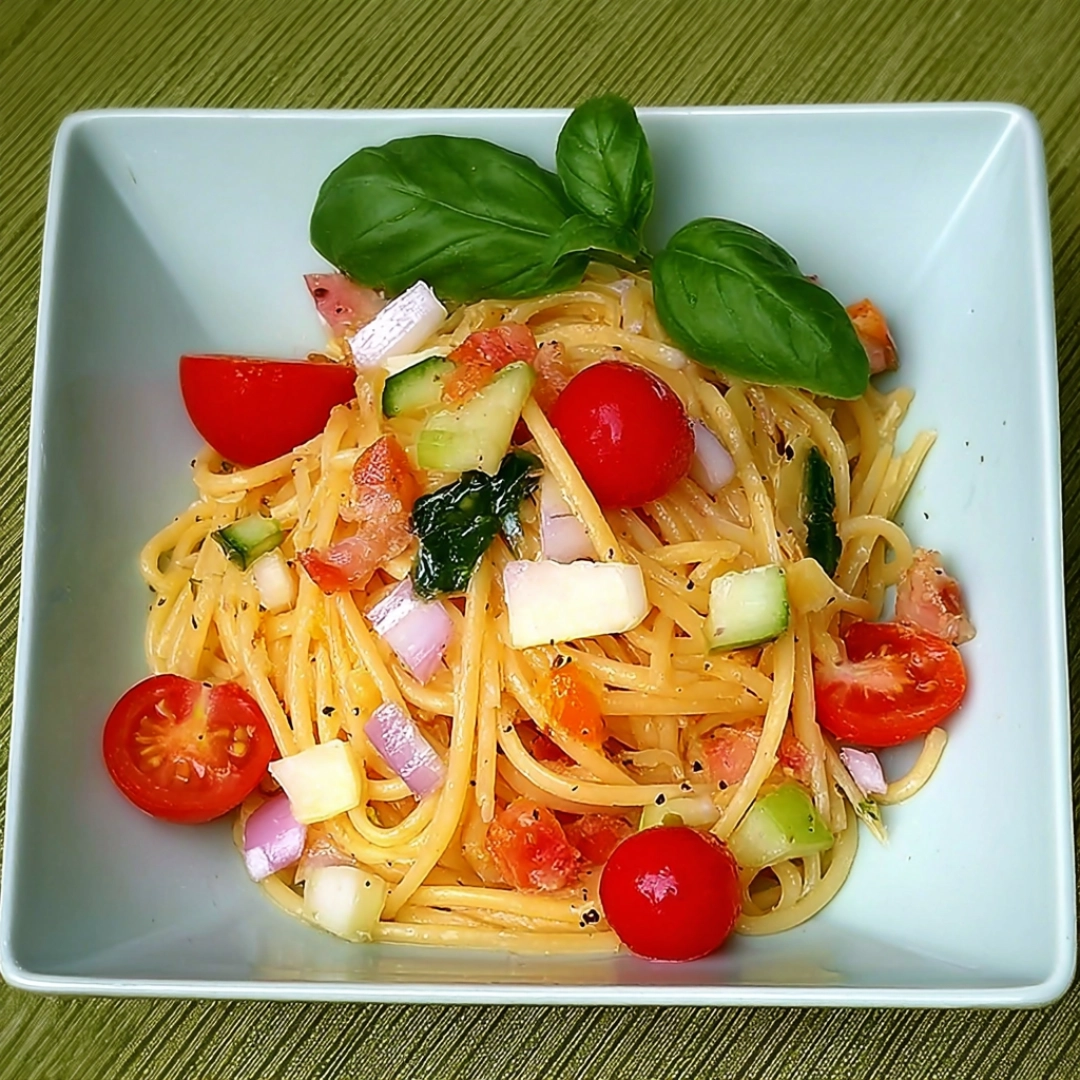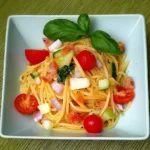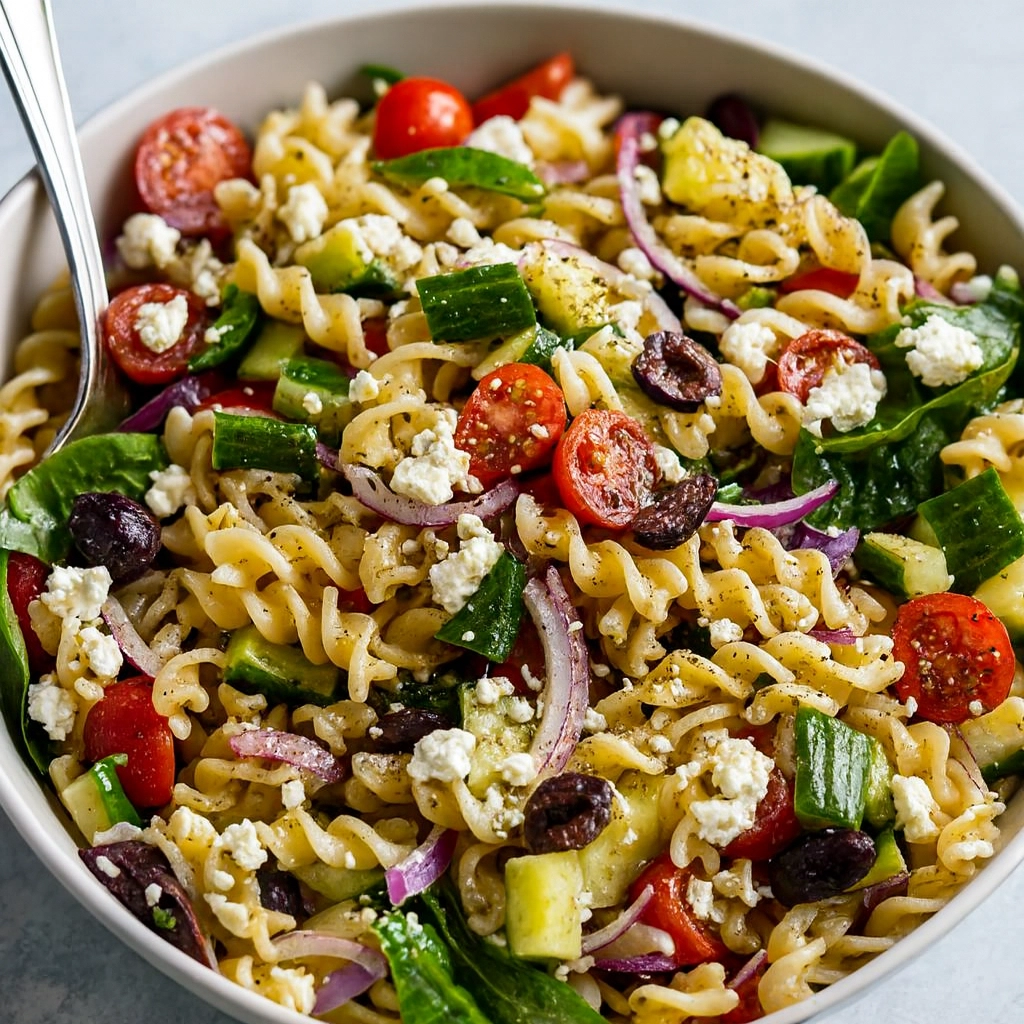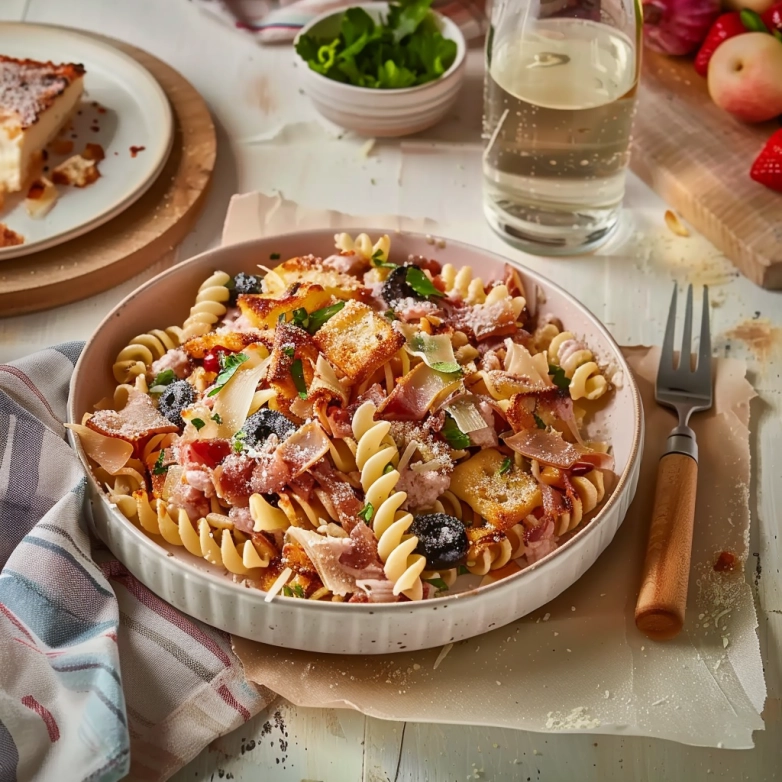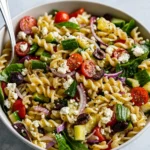There are summer days when even turning on the stove feels like a battle. If you’ve ever opened your fridge in search of something cool, light and still deeply satisfying, this summer tagliolini pasta recipe is your kind of answer. It’s quick, vibrant and doesn’t ask you to simmer sauces or roast anything for hours. Instead, it leans into the natural flavors of fresh vegetables, good olive oil and the soft bite of Italian egg pasta.
This isn’t your typical pasta salad. Unlike versions made with short shapes and heavy dressings, this dish honors the delicate elegance of Italian tagliolini pasta, a thin ribbon-like noodle traditionally made fresh. The vegetables don’t cook at all. Instead, they marinate gently in olive oil, lemon juice and garlic, letting their juices mingle until they’re practically a dressing of their own. The result is a simple tagliolini pasta recipe that delivers both flavor and relief from the heat.
Created in Bologna and tied to regional traditions, this tagliolini is the kind of dish that makes you want to eat slowly, maybe with the window open and a soft breeze nearby. If you’ve been hunting for summer meals that are easy, healthy and refreshing, this might become your new favorite. It’s also adaptable, and we’ll explore substitutions, pasta variations and even how this compares to creamy tagliolini pasta recipes later on.
Before we dive into the full step-by-step instructions, ingredients and tips, here’s what makes this recipe stand out. It’s:
- A no-cook sauce recipe (only the pasta needs boiling)
- Packed with fresh, crunchy vegetables
- Easy to customize based on what’s in season
- Ideal for lunch or a light dinner
- Flexible enough for vegetarians or those skipping dairy
Whether you’re craving lemon tagliolini recipes with a bit more zing or simply want a dish that feels like summer in a bowl, this guide will walk you through every part.
Table of Contents
Ingredients for Summer Tagliolini Pasta
Before you start prepping, it’s helpful to understand what makes this dish shine. At the heart of this simple tagliolini pasta recipe is a balance between freshness and texture. The vegetables are meant to stay raw but marinated, so they retain their crunch while taking on the flavors of olive oil, lemon and basil.
Here’s what you’ll need:
- 400 g fresh tagliolini pasta (about 14 oz). If you can’t find fresh tagliolini, dried spaghetti or linguine works too.
- 2 celery stalks, finely diced
- 2 to 3 zucchini, depending on size, cut into small cubes
- 3 to 4 carrots, peeled and chopped small
- 2 red bell peppers, seeds removed and diced
- 15 cherry tomatoes, halved
- ½ lemon, juiced
- 1 bunch fresh basil, washed and torn or chopped
- 2 garlic cloves, crushed
- 500 ml vegetable or beef broth (about 16 fl oz), for cooking pasta
- Extra virgin olive oil, enough to coat the vegetables
- Salt and black pepper, to taste
- Parmigiano flakes, optional (use a substitute or omit if avoiding dairy)
Tagliolini Pasta Shape Explained
Tagliolini is a long, ribbon-like egg pasta similar to tagliatelle but much thinner. It’s delicate and ideal for light sauces. Its shape allows it to gently wrap around ingredients without overpowering them. In this recipe, its soft bite contrasts beautifully with the crisp vegetables. If you’re curious about where to buy tagliolini pasta, we’ll cover that in the FAQ below.
Optional Add-ins:
You can switch up the vegetable mix based on the season or your taste. Here are a few popular options:
- Raw fennel slices for a light anise note
- Spring onions or radishes for sharpness
- Asparagus tips or peas for extra green color
- Blanched green beans, diced
- Artichoke hearts, thinly sliced
How to Make Summer Tagliolini Pasta
This simple tagliolini pasta recipe comes together in just a few steps. The only thing you’ll actually cook is the pasta. Everything else stays raw and fresh, giving the dish its unmistakable summer energy.
Step-by-step instructions:
1. Prep your vegetables
Wash and dry all the produce. Then, dice the celery, zucchini, carrots and red bell peppers into small, even pieces. Halve the cherry tomatoes and roughly chop or tear the basil leaves. This helps every bite get a bit of everything.
2. Make the marinade
Place the chopped vegetables in a large mixing bowl. Add the crushed garlic, lemon juice and enough olive oil to lightly coat everything, like you would with a fresh salad. Season with a bit of salt and black pepper. Toss gently, cover the bowl and let it sit for at least one hour at room temperature. This allows the veggies to soften slightly and absorb the bright, garlicky oil.
3. Cook the tagliolini
Bring a pot of water mixed with broth to a gentle boil. If using a stock cube, dissolve it in the boiling water. There’s no need to add extra salt if broth or a cube is already in play. Cook the fresh tagliolini for 3 to 5 minutes or according to package directions until al dente.
4. Combine and serve
Drain the pasta and transfer it immediately to the bowl of marinated vegetables. Drizzle in a little more olive oil, then gently toss everything together using tongs or a fork until well combined. The residual heat from the pasta will help release aroma from the herbs and slightly warm the vegetables without cooking them.
5. Plate it up
Taste and adjust seasoning with salt or pepper if needed. Sprinkle with Parmigiano flakes if using, and serve right away while the pasta is still warm but not hot.
This dish is best enjoyed tepid, where the flavors are mellow and the texture contrast is at its peak.
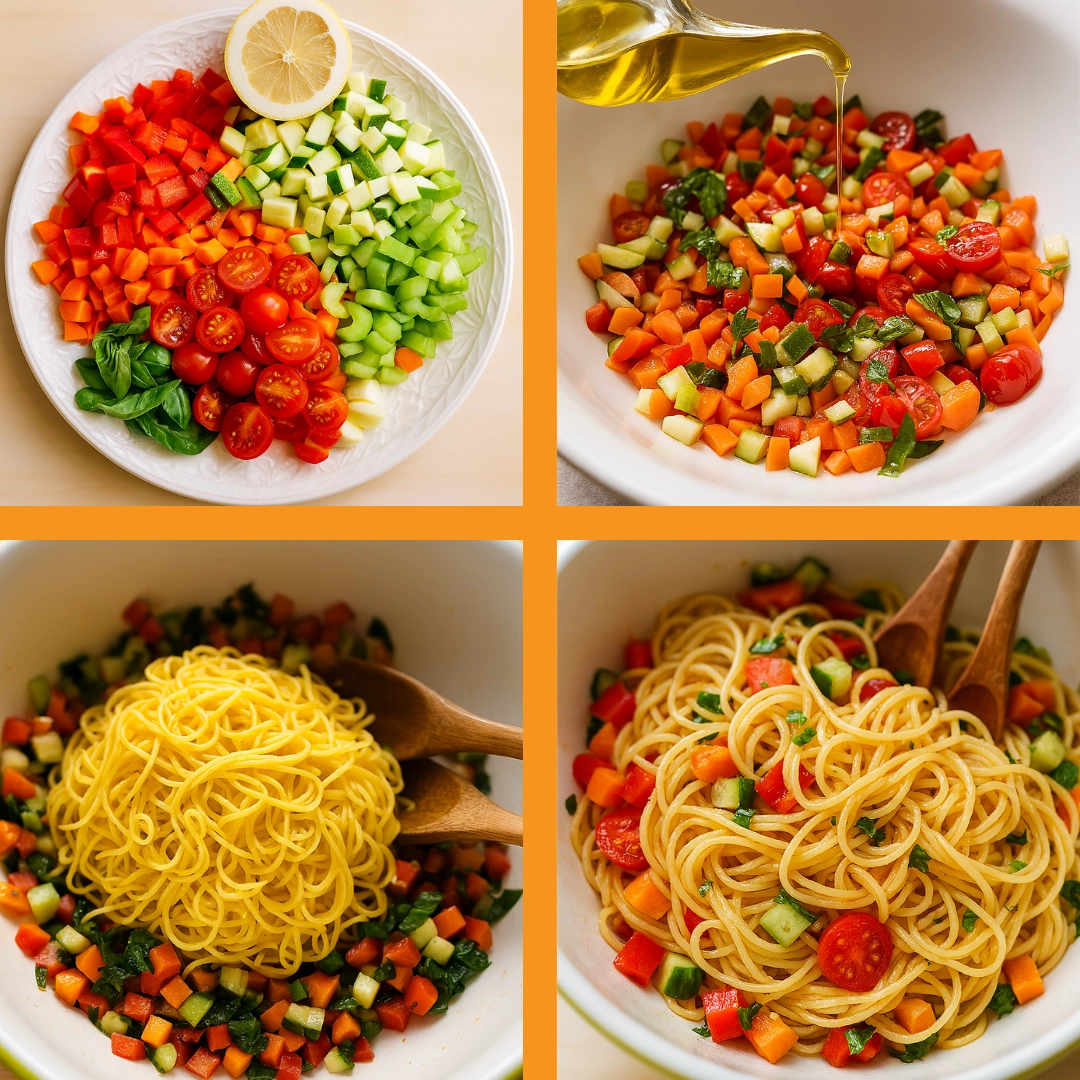
Can I make this creamy?
Not exactly, but if you’re craving a creamy tagliolini pasta recipe, you could stir in a spoonful of ricotta or soft cream cheese after combining the pasta and vegetables. For something even richer, check out this Philadelphia cream cheese pasta variation which delivers creaminess without heavy sauces.
Tips and Tricks for Perfect Summer Tagliolini
The beauty of this dish lies in how effortlessly it comes together, but a few thoughtful touches can make it even better. Whether you’re making it for a weeknight dinner or a laid-back summer gathering, these tips will help you get the most out of each ingredient.
Get the texture right
- Cut small, but not too fine: Keep vegetables small enough to coat the pasta evenly, but large enough to retain some crunch. Think confetti-sized cubes.
- Let the marinade do the work: Don’t rush the marinating step. One hour of rest lets the garlic and lemon mellow out and helps the veggies release just enough juice to dress the noodles naturally.
Choose the right pasta
- Fresh tagliolini works best for this recipe because it cooks quickly and has a tender texture that matches well with raw vegetables. If you’re using dry pasta, spaghetti or fettuccine are good alternatives.
- Not familiar with tagliolini? Check out other regional shapes like pappardelle, ditalini, or garganelli for inspiration.
Amplify the lemon
If you’re drawn to lemon tagliolini recipes, you can dial up the citrus flavor in two easy ways:
- Add a bit of grated lemon zest to the marinade for a more fragrant finish.
- Swap out half the olive oil for lemon-infused olive oil to double down on the brightness without making it too sour.
Let it rest, but not too long
This pasta is best served shortly after mixing. It doesn’t need to be piping hot, but leaving it too long may soften the veggies too much. That said, leftovers can still be good — just store in the fridge and enjoy cold the next day, similar to a pasta salad.
Substitutions and Variations
This dish
is flexible by nature. It’s one of those dishes that you can adjust based on what’s in your fridge, your taste preferences, or who you’re cooking for. Below are a few ideas to make it your own, without losing its refreshing, summery vibe.
Swap the vegetables
You don’t have to stick to the original mix. The key is to keep the vegetables raw or barely blanched and cut them small. Here are some tasty swaps:
- Raw fennel for a slight anise flavor
- Shaved radishes for a peppery snap
- Green beans, trimmed and blanched
- Sweet peas or sugar snap peas, halved
- Asparagus tips, briefly steamed
- Cucumber, diced (add just before mixing to avoid sogginess)
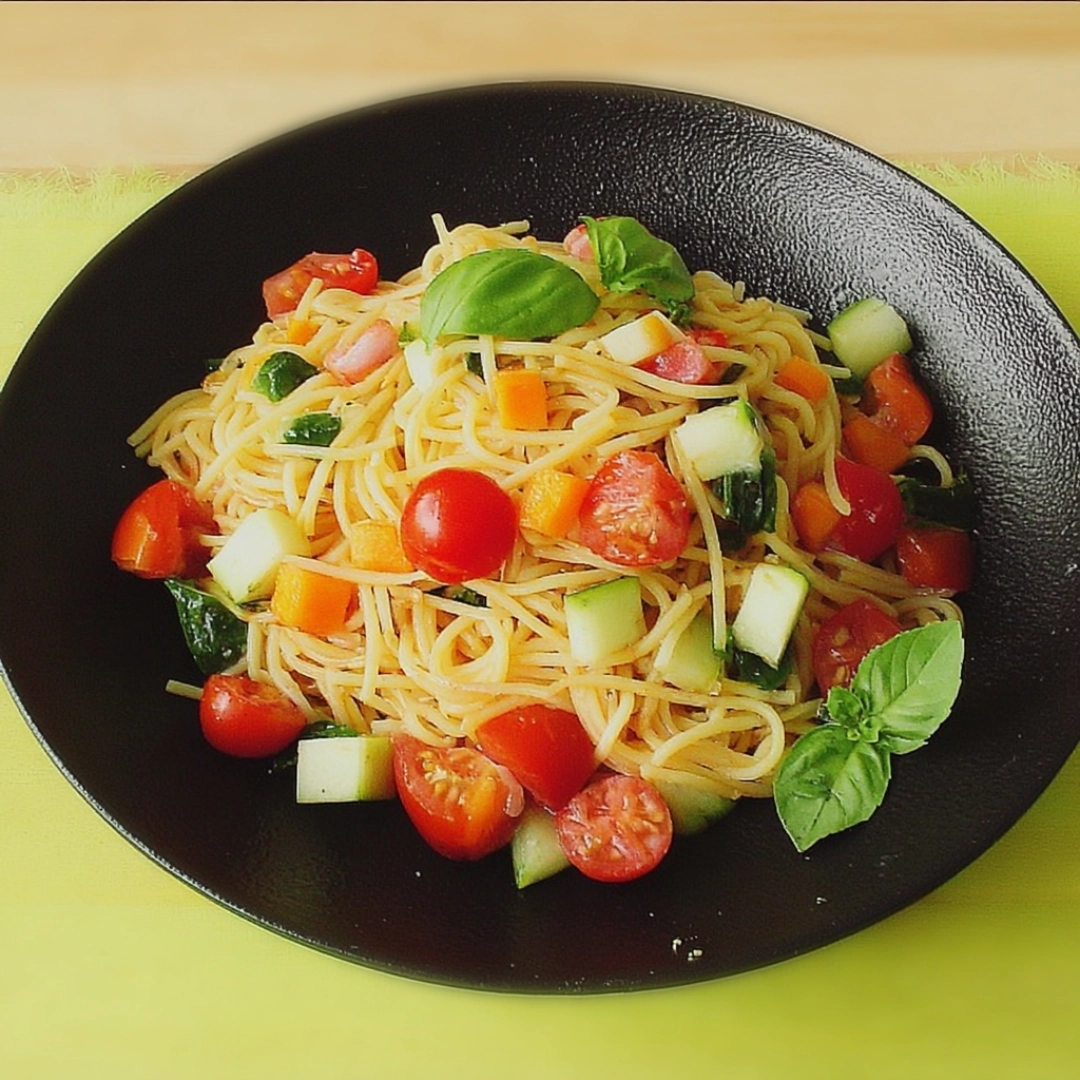
Make it dairy-free or creamier
While this dish is naturally light, it can go either way depending on your mood:
- No cheese? Skip the Parmigiano flakes. A touch of nutritional yeast or a sprinkle of toasted nuts can give a similar savory edge.
- Want it creamy? Stir in a spoonful of ricotta or use a soft cheese base like in this Philadelphia cream cheese pasta. It creates a creamy tagliolini pasta recipe feel, without overpowering the fresh elements.
Try other pasta types
Fresh tagliolini isn’t always easy to find, but you’ve got options:
- Use dried spaghetti, linguine, or vermicelli
- For a slightly firmer bite, try pappardelle or even mushroom pappardelle
- Short pasta like sacchetti or ditalini creates a more salad-like texture
This dish is open to interpretation. Feel free to experiment once you’ve made it once, especially with herbs, veggies and the kind of olive oil you prefer.
Frequently Asked Questions (FAQ)
Where can I buy tagliolini pasta?
Fresh tagliolini is often found in the refrigerated section of specialty Italian stores or well-stocked supermarkets. If it’s not available locally, many online retailers carry it, either fresh or dried. You can also consider homemade if you’re up for a pasta-making project. Otherwise, similar shapes like spaghetti or garganelli are great stand-ins.
Can I make this recipe ahead of time?
Yes, but with a caveat. The vegetables can be chopped and marinated a few hours in advance and stored in the fridge. The pasta, however, should be cooked and combined just before serving for the best texture. If you’re planning to serve it later, mix everything and keep it chilled, then let it come to room temperature before eating.
What pasta can I use instead of tagliolini?
If you can’t find tagliolini, use spaghetti, linguine, vermicelli, or fresh fettuccine. For something heartier, try pappardelle or even short shapes if you want more of a salad-like dish. Just keep the pasta al dente to balance the crunch of the raw vegetables.
How long do leftovers last?
Leftovers will keep well for up to 2 days in the refrigerator. Store in an airtight container and enjoy it cold, like a pasta salad, or bring it to room temperature before serving. Avoid reheating, as the vegetables are meant to stay fresh and uncooked.
Nutrition Information
This dish offers a clean and satisfying balance between carbs, fiber, and fresh produce. With a base of olive oil and raw vegetables, it’s light but filling, especially when served as a main course.
Per serving (based on 4 portions), you can expect approximately:
- Calories: 443 kcal
- Carbohydrates: 91 g
- Protein: 16 g
- Fat: 2 g
- Saturated Fat: 0.4 g
- Fiber: 7 g
- Sugar: 13 g
- Potassium: 911 mg
- Vitamin A: 10,393 IU
- Vitamin C: 113 mg
- Calcium: 70 mg
- Iron: 3 mg
These numbers may vary slightly depending on the type of broth and the exact weight of your vegetables, but overall this recipe is rich in antioxidants, low in saturated fat, and offers a decent fiber kick thanks to the variety of produce.
Conclusion
There’s something quietly comforting about meals that don’t need much — just good ingredients, a little patience and the right pasta. This dish is a reminder that flavor doesn’t always need to be cooked into submission. Sometimes, letting fresh vegetables speak for themselves is all it takes.
Whether you’re drawn to this dish for its simplicity, its cool and refreshing bite, or the fact that it keeps your kitchen heat-free, it’s a recipe worth repeating. Play with the ingredients, tweak it to suit your mood and don’t be afraid to get creative. That’s the beauty of summer cooking — nothing’s too rigid.
If you enjoyed this, you might also love trying something creamy and comforting like chicken bacon ranch pasta, a hearty classic like pasta e fagioli, or a chilled option like dill pickle pasta salad for your next gathering.
When you make this recipe, come back and let me know how it went. I’d love to hear your twists, favorites, or even what veggies you ended up using.
Enjoy your meal, and as always, happy cooking.
Craving easy, flavorful meals?
Don’t miss a bite—follow us on Facebook for daily comfort food, quick dinner ideas, and delicious inspiration: Flavour Recipe Facebook
Join us on Pinterest for mouthwatering food boards, smart meal prep tips, and family-friendly favorites: Flavour Recipe Pinterest
Let’s whip up something amazing together!
PrintSummer Tagliolini Pasta Recipe with Marinated Vegetables
This fresh and simple summer tagliolini pasta recipe combines lightly marinated raw vegetables with tender pasta for a vibrant, no-cook sauce ideal for hot days.
- Prep Time: 15 mins
- Cook Time: 5 mins
- Total Time: 20 mins
- Yield: 4 servings 1x
- Category: Main Course
- Method: No-Cook Sauce
- Cuisine: Italian
- Diet: Vegetarian
Ingredients
- 400 g fresh tagliolini pasta (or spaghetti/linguine)
- 2 celery stalks, diced
- 2–3 zucchini, cubed
- 3–4 carrots, finely chopped
- 2 red bell peppers, chopped
- 15 cherry tomatoes, halved
- ½ lemon, juiced
- 1 bunch fresh basil, chopped
- 2 garlic cloves, crushed
- 500 ml vegetable or beef broth
- Extra virgin olive oil
- Salt and pepper to taste
- Parmigiano flakes (optional)
Instructions
- 1. Wash and chop all the vegetables into small, even pieces.
- 2. Place them in a bowl and add olive oil, crushed garlic, lemon juice, basil, salt, and pepper. Mix well and let marinate for 1 hour.
- 3. Boil pasta in broth or salted water until al dente. Drain.
- 4. Add hot pasta to the bowl of marinated vegetables. Toss gently with extra olive oil.
- 5. Adjust seasoning if needed. Top with Parmigiano if using. Serve warm or at room temperature.
Notes
- Use high-quality extra virgin olive oil for the best flavor.
- Substitute vegetables as needed: radishes, fennel, green beans, peas, or asparagus.
- Pairs well with lemon zest for added citrus depth.
- Leftovers can be chilled and enjoyed cold the next day.
Nutrition
- Serving Size: 1 bowl
- Calories: 443
- Sugar: 13g
- Sodium: 553mg
- Fat: 2g
- Saturated Fat: 0.4g
- Unsaturated Fat: 1g
- Trans Fat: 0g
- Carbohydrates: 91g
- Fiber: 7g
- Protein: 16g
- Cholesterol: 0mg
Nutrition Disclaimer: The nutrition information provided in the Recipe card is an estimate only.For the most accurate results, please calculate the values yourself using your preferred nutrition calculator.

